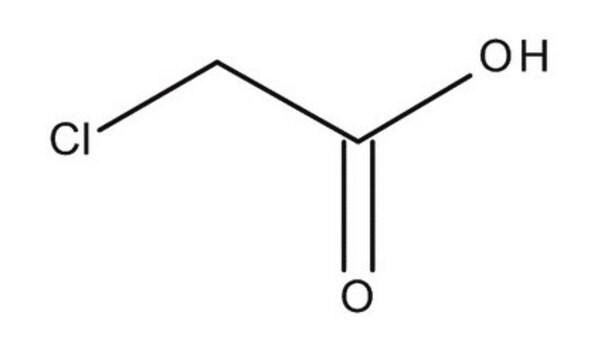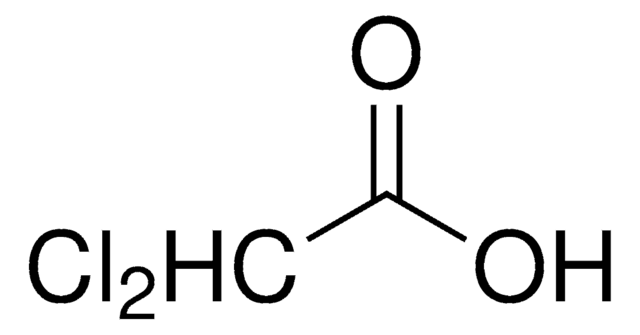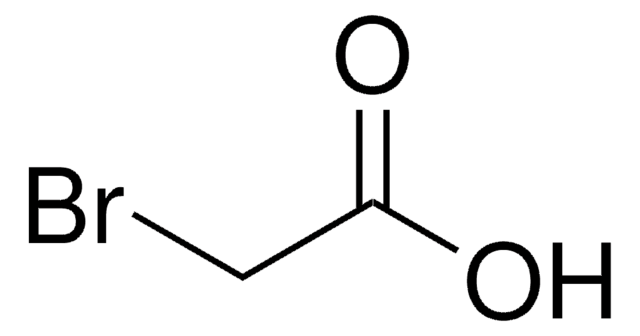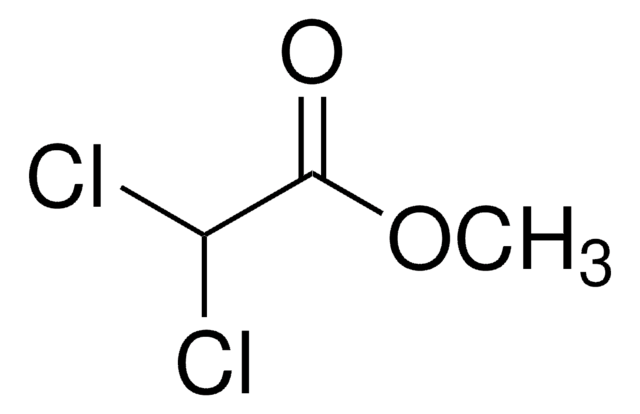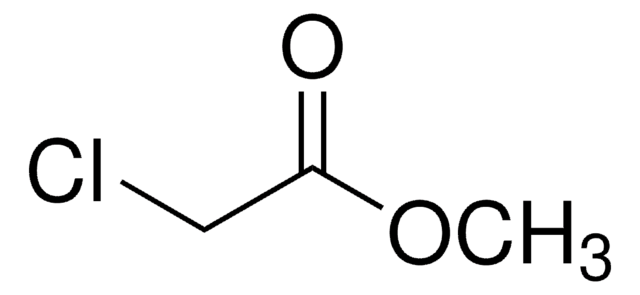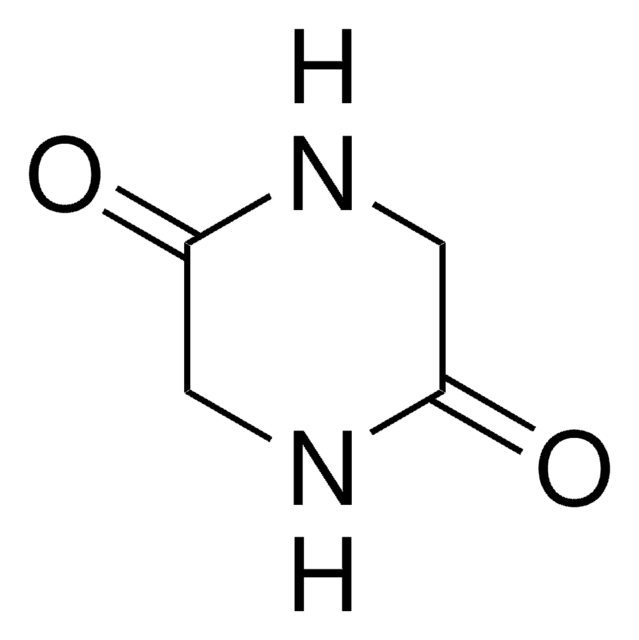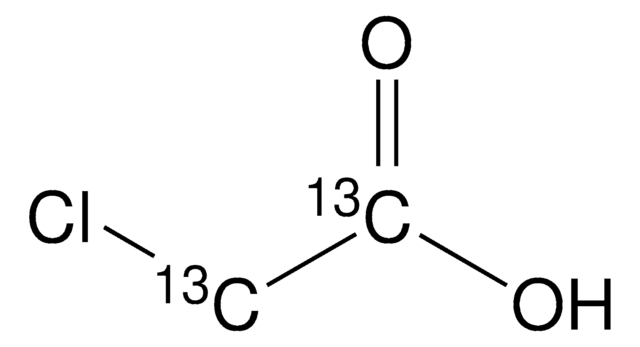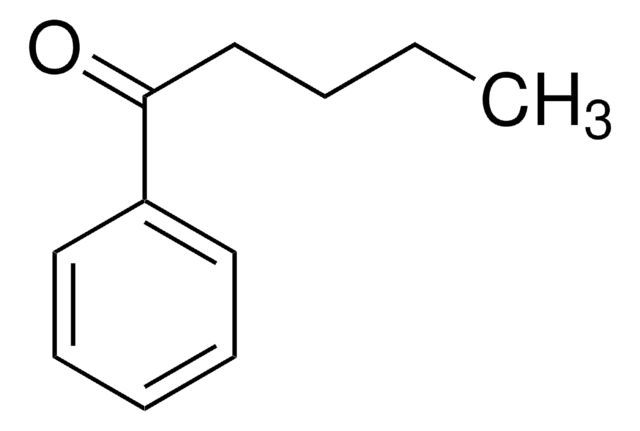C19627
Acide chloroacétique
99%
Synonyme(s) :
Acide monochloroacétique
About This Item
Produits recommandés
Densité de vapeur
3.26 (vs air)
Niveau de qualité
Pression de vapeur
0.75 mmHg ( 20 °C)
Essai
99%
Forme
crystals
pb
189 °C (lit.)
Pf
60-63 °C (lit.)
Solubilité
water: soluble 3,170 g/L at 10 °C
Groupe fonctionnel
carboxylic acid
chloro
Chaîne SMILES
OC(=O)CCl
InChI
1S/C2H3ClO2/c3-1-2(4)5/h1H2,(H,4,5)
Clé InChI
FOCAUTSVDIKZOP-UHFFFAOYSA-N
Vous recherchez des produits similaires ? Visite Guide de comparaison des produits
Description générale
Application
- Thiocarbamoylthioacetic acid derivatives.
- 4-Thiazolone derivatives.
- Triazinothiazolone derivatives.
- Water soluble carboxymethyl chitosan.
Clause de non-responsabilité
Mention d'avertissement
Danger
Mentions de danger
Classification des risques
Acute Tox. 3 Dermal - Acute Tox. 3 Inhalation - Acute Tox. 3 Oral - Aquatic Acute 1 - Eye Dam. 1 - Skin Corr. 1B - STOT SE 3
Organes cibles
Respiratory system
Code de la classe de stockage
6.1A - Combustible acute toxic Cat. 1 and 2 / very toxic hazardous materials
Classe de danger pour l'eau (WGK)
WGK 3
Point d'éclair (°F)
258.8 °F - closed cup
Point d'éclair (°C)
126 °C - closed cup
Équipement de protection individuelle
dust mask type N95 (US), Eyeshields, Faceshields, Gloves, type P2 (EN 143) respirator cartridges, type P3 (EN 143) respirator cartridges
Faites votre choix parmi les versions les plus récentes :
Déjà en possession de ce produit ?
Retrouvez la documentation relative aux produits que vous avez récemment achetés dans la Bibliothèque de documents.
Les clients ont également consulté
Notre équipe de scientifiques dispose d'une expérience dans tous les secteurs de la recherche, notamment en sciences de la vie, science des matériaux, synthèse chimique, chromatographie, analyse et dans de nombreux autres domaines..
Contacter notre Service technique
